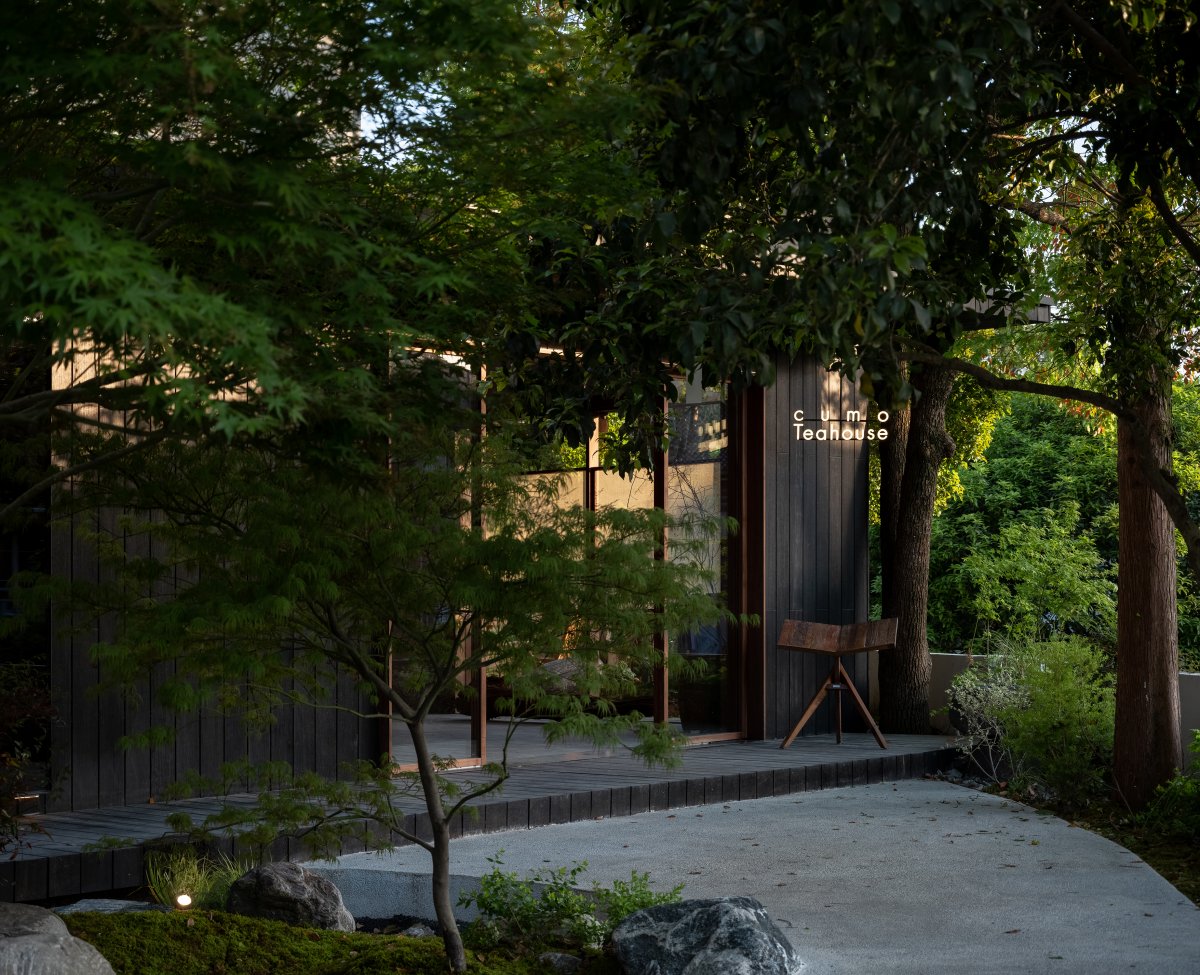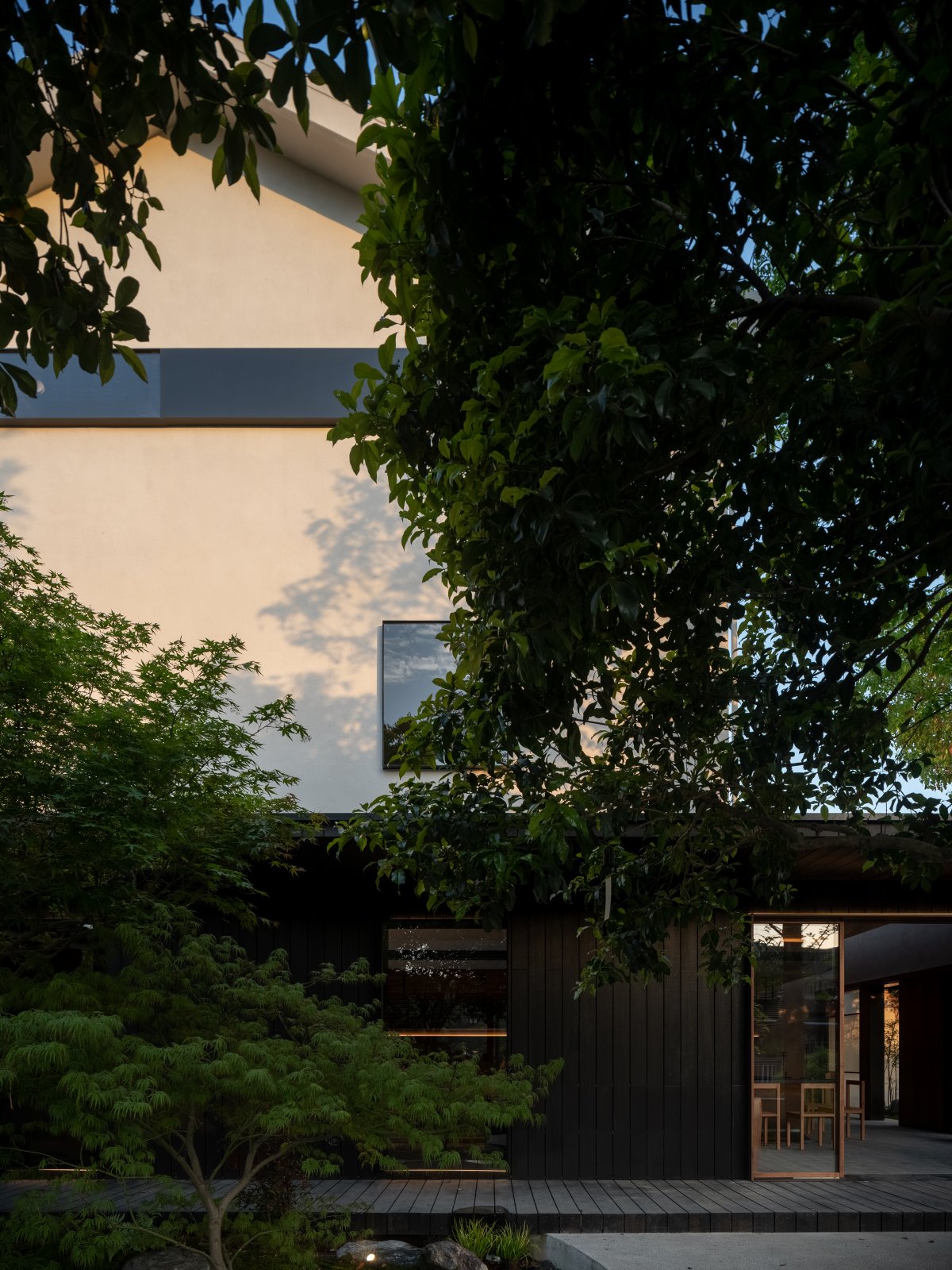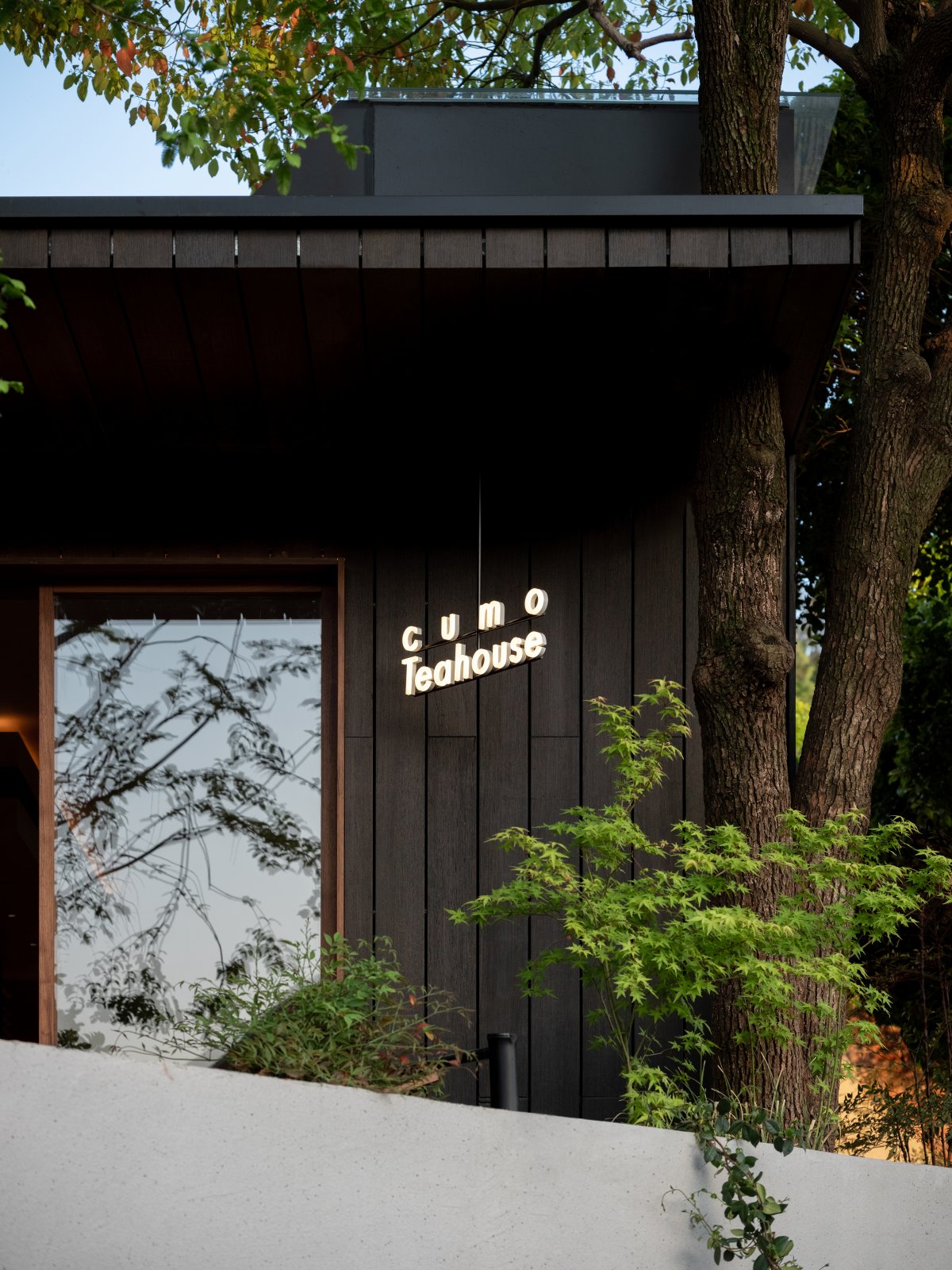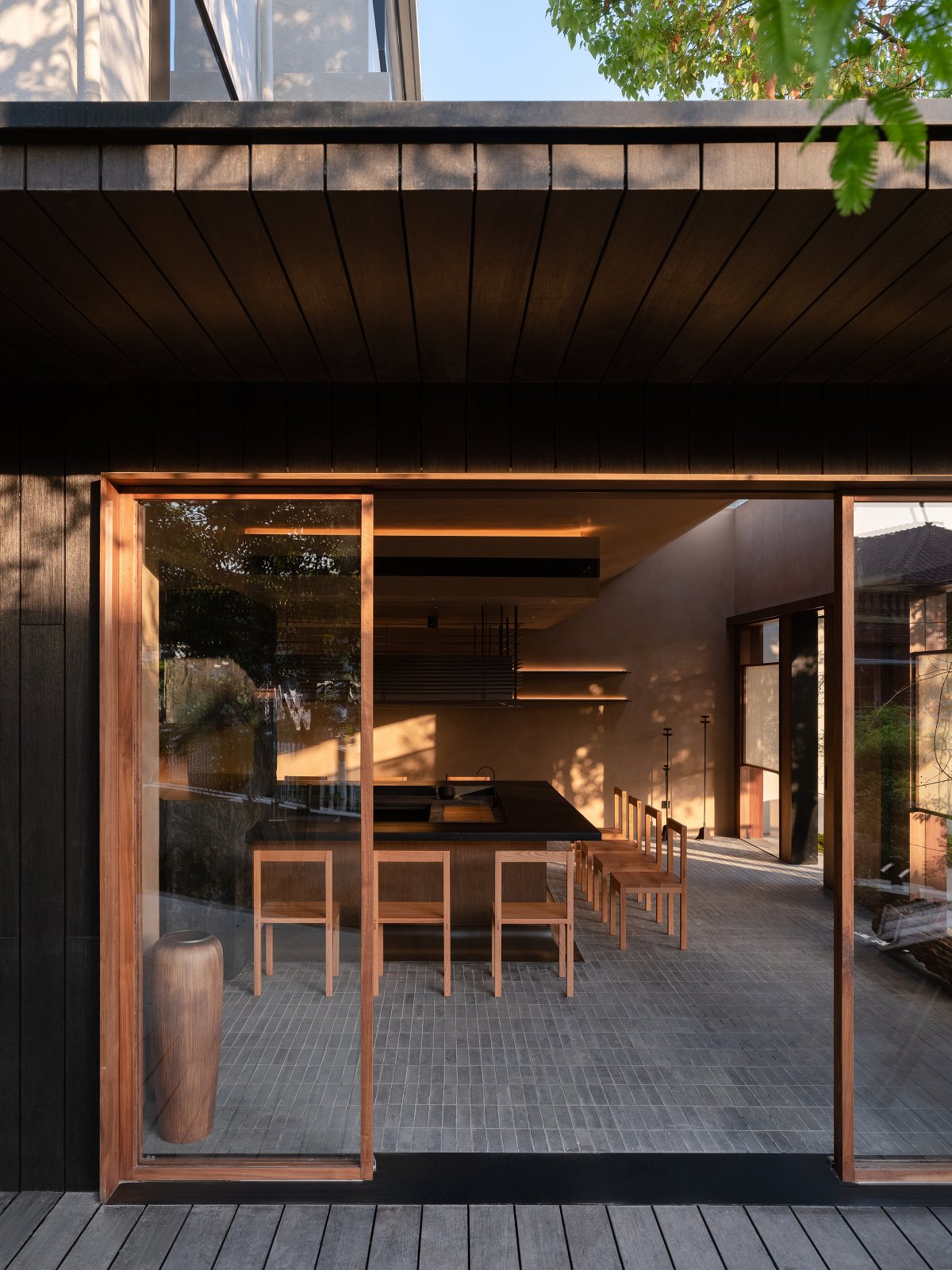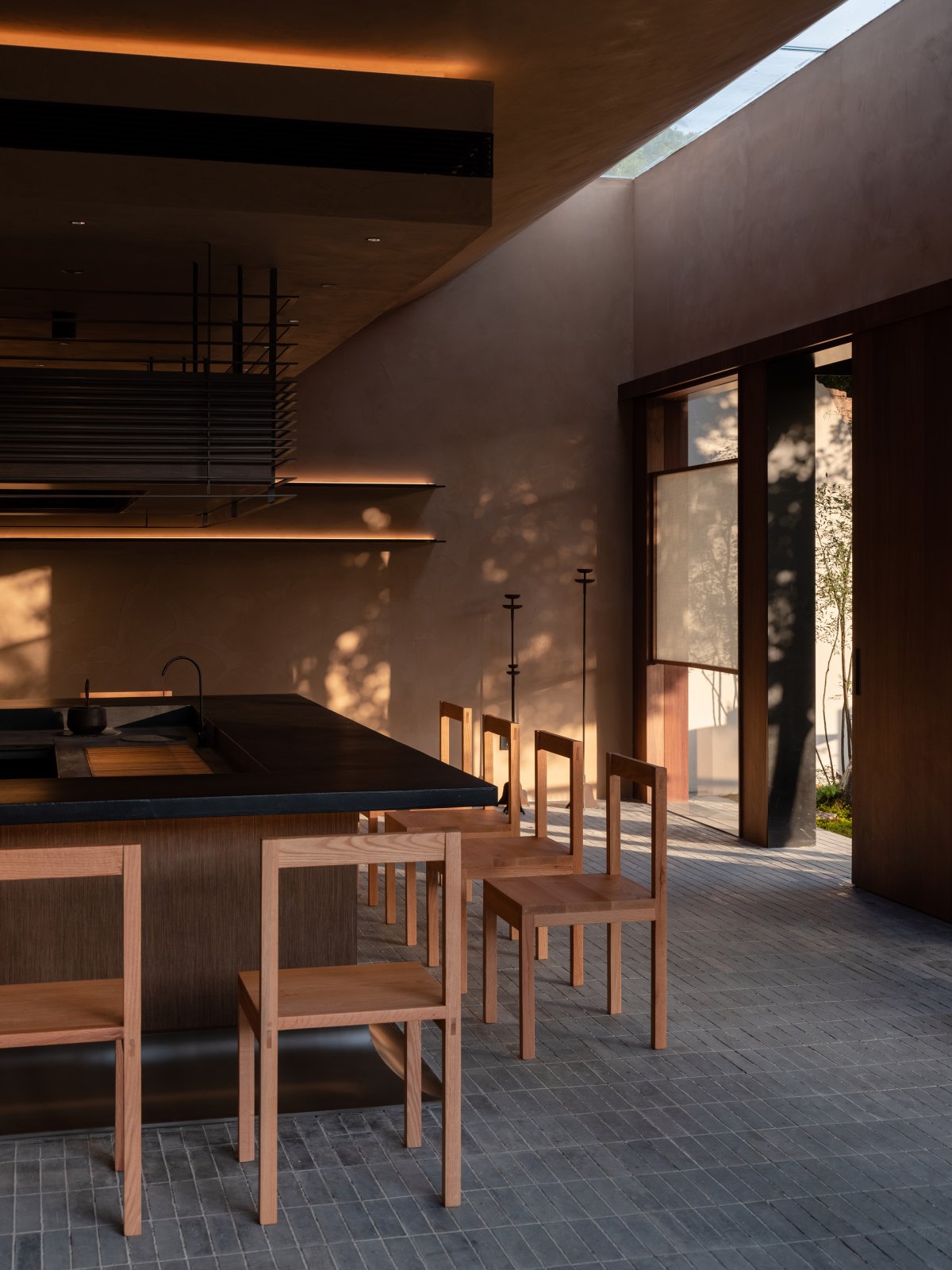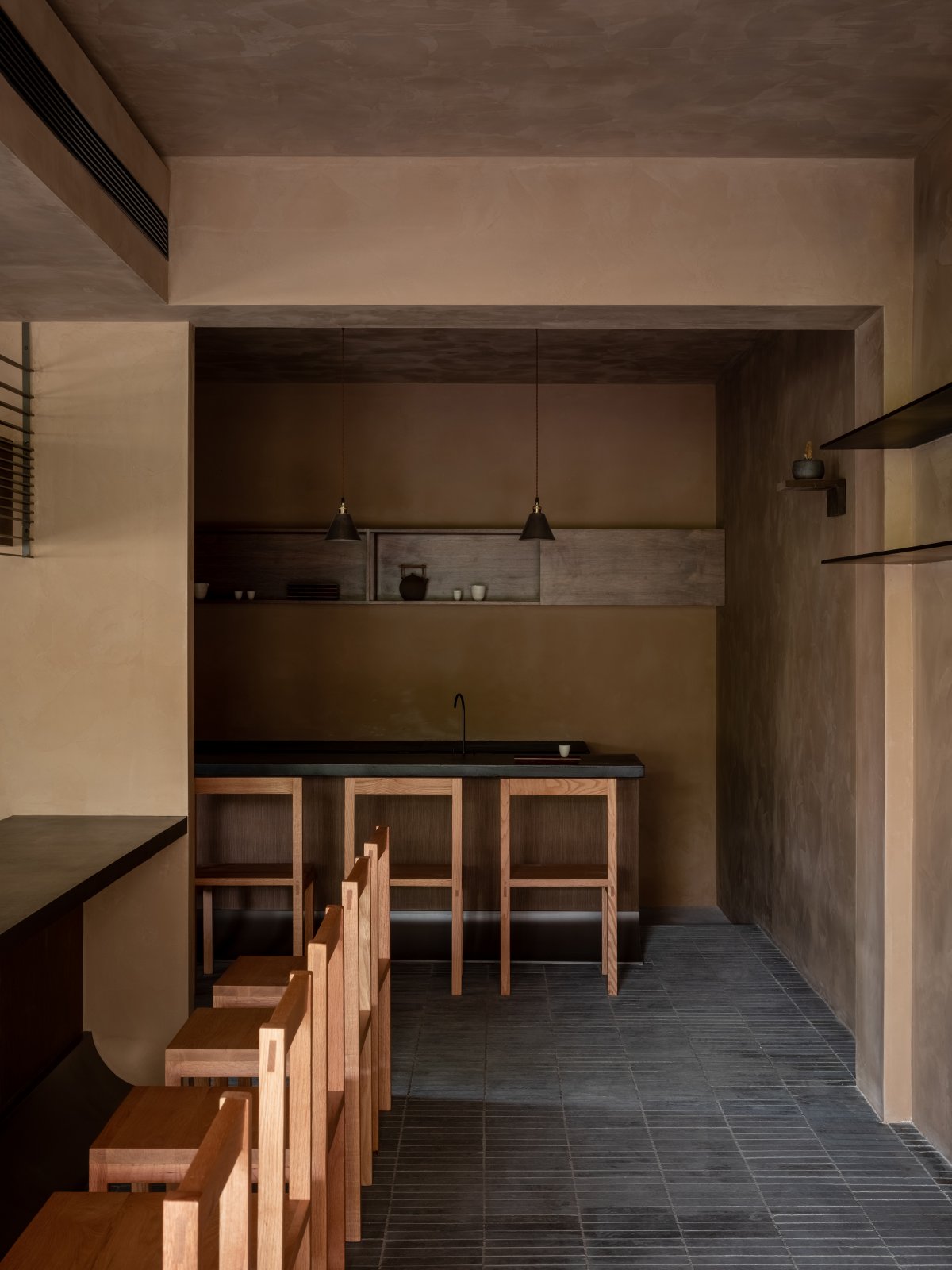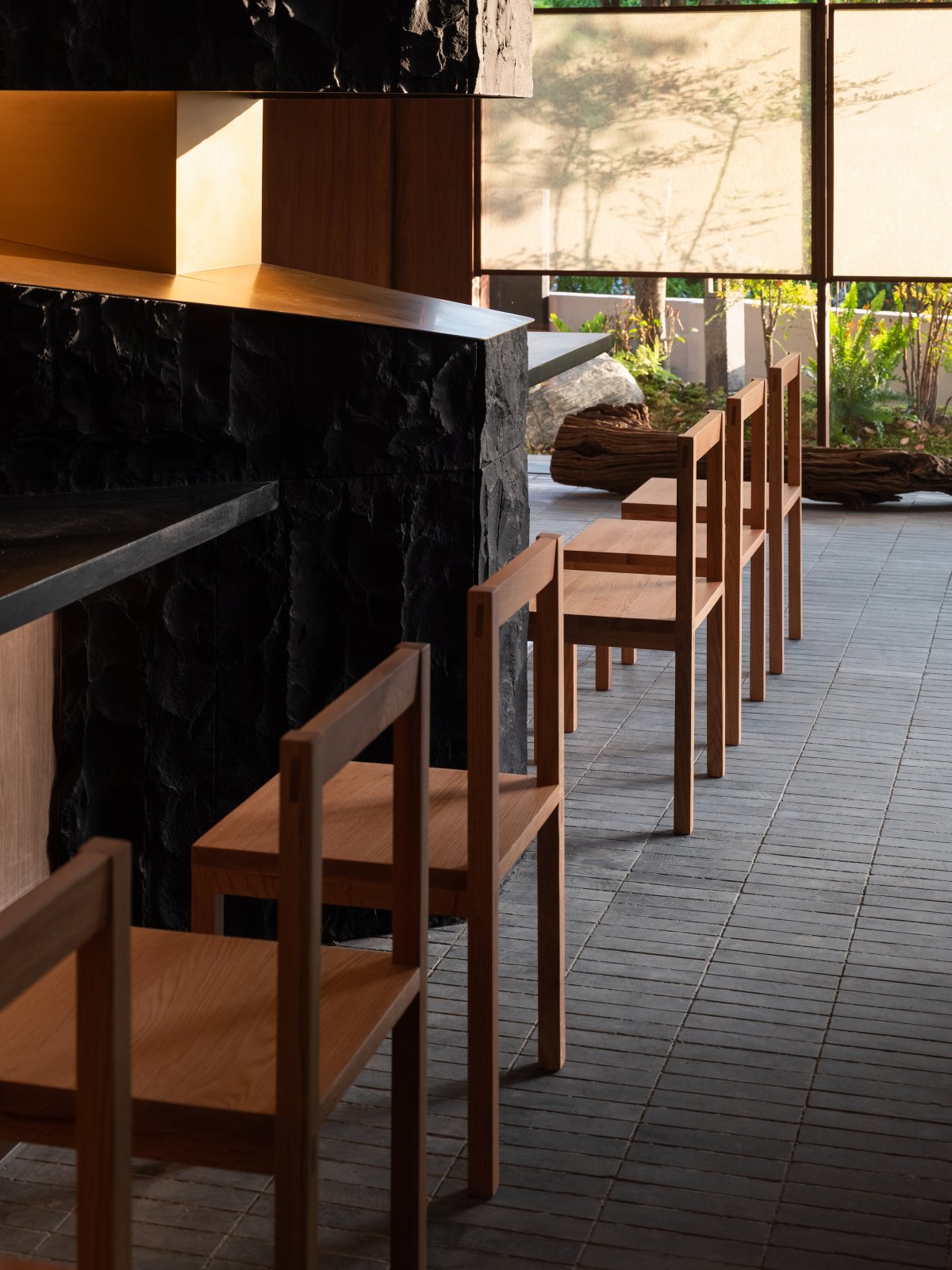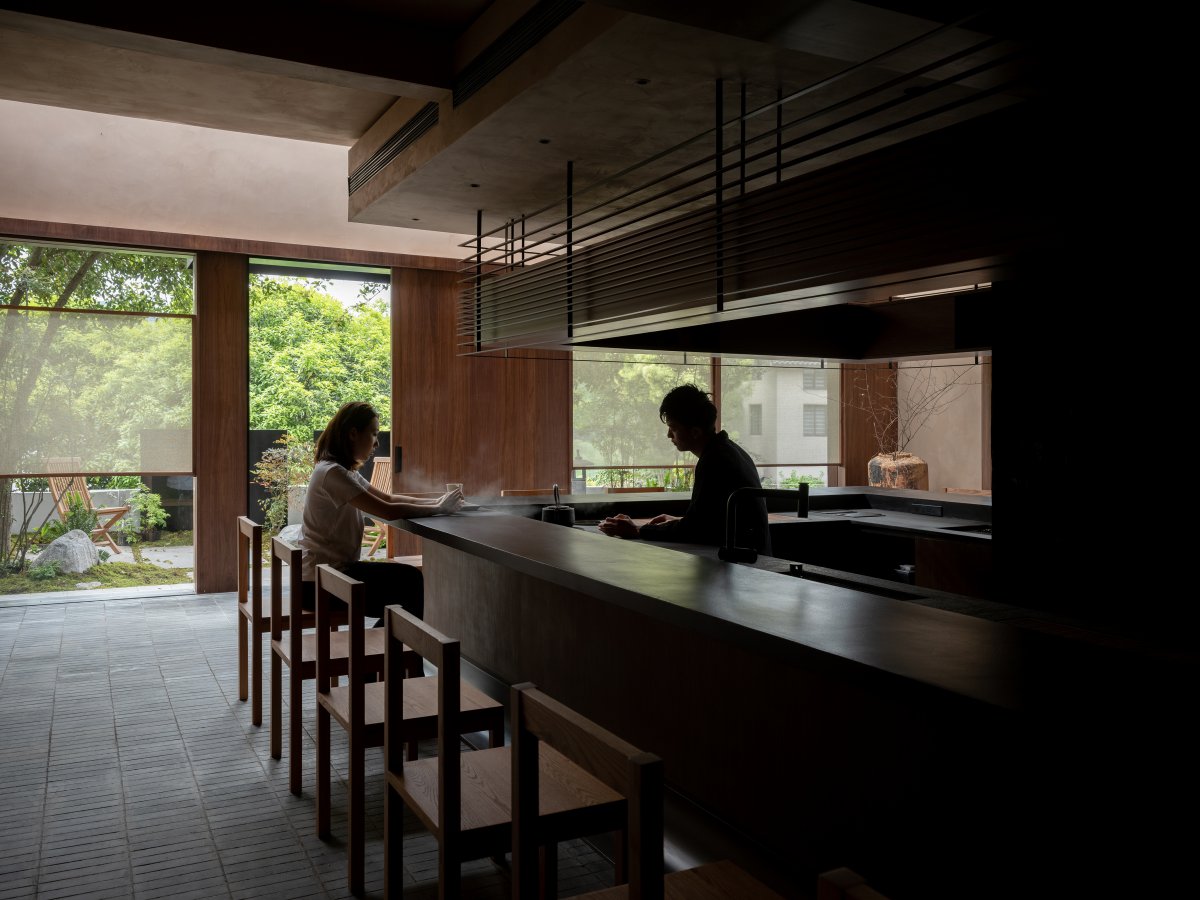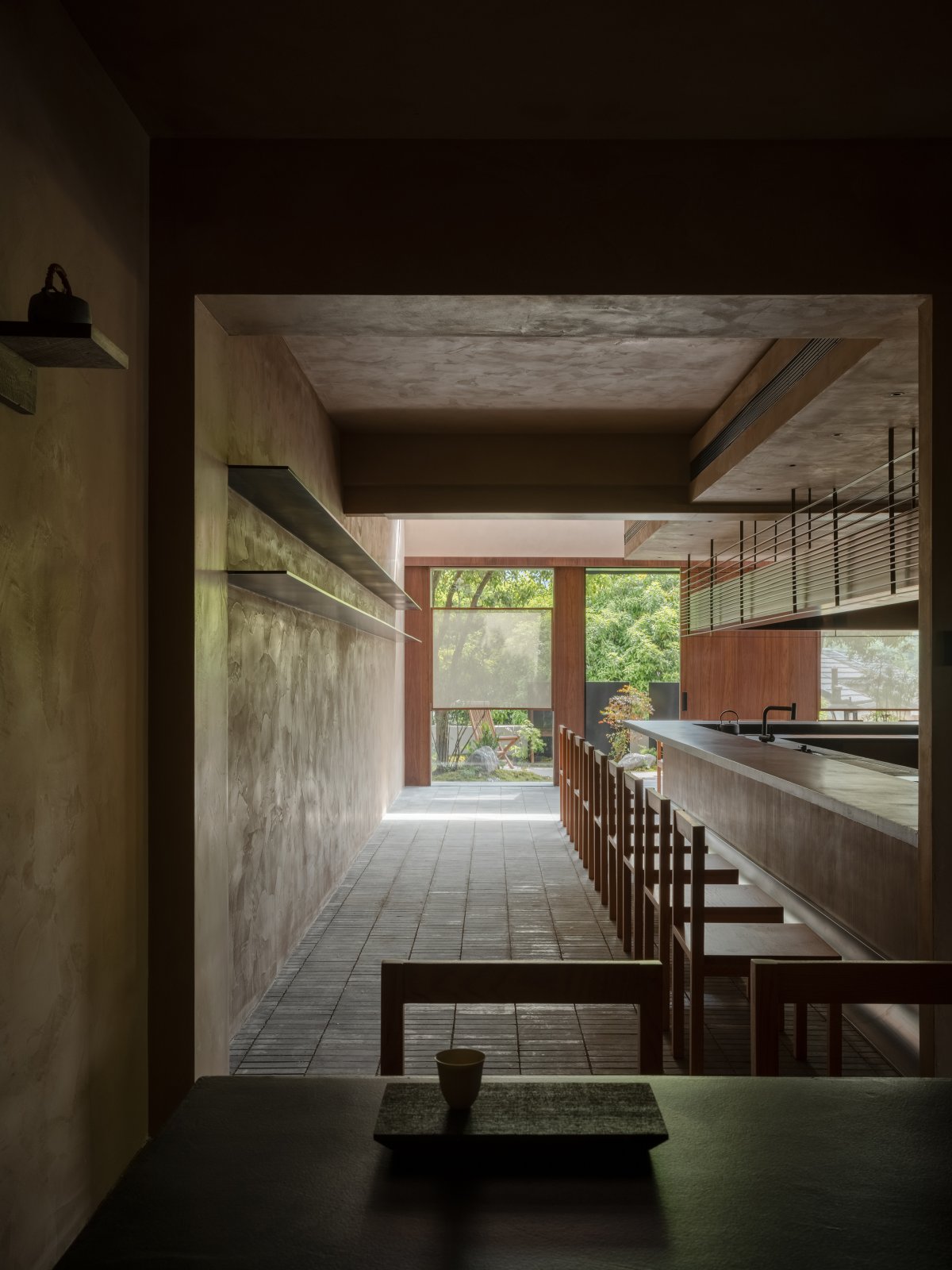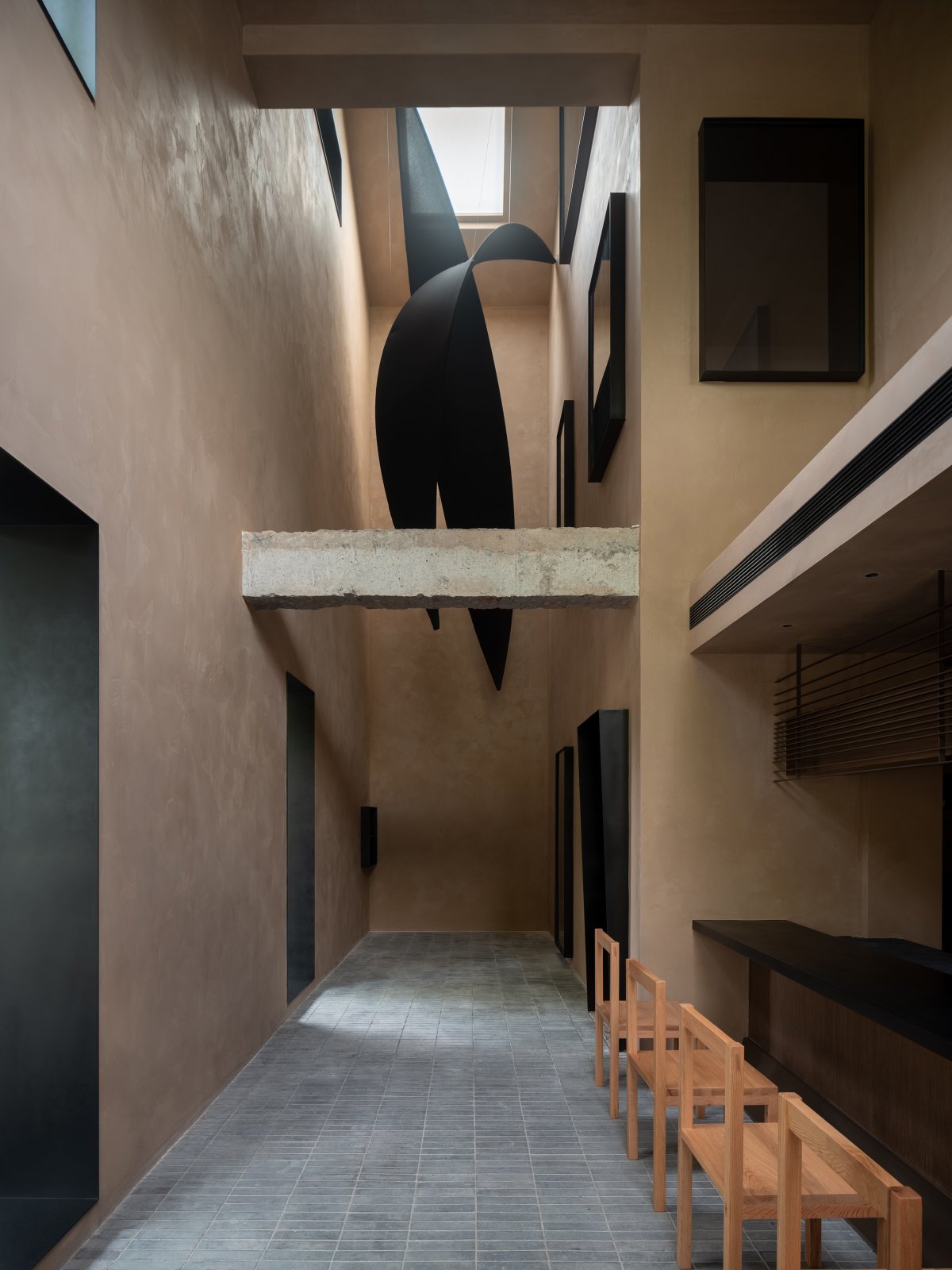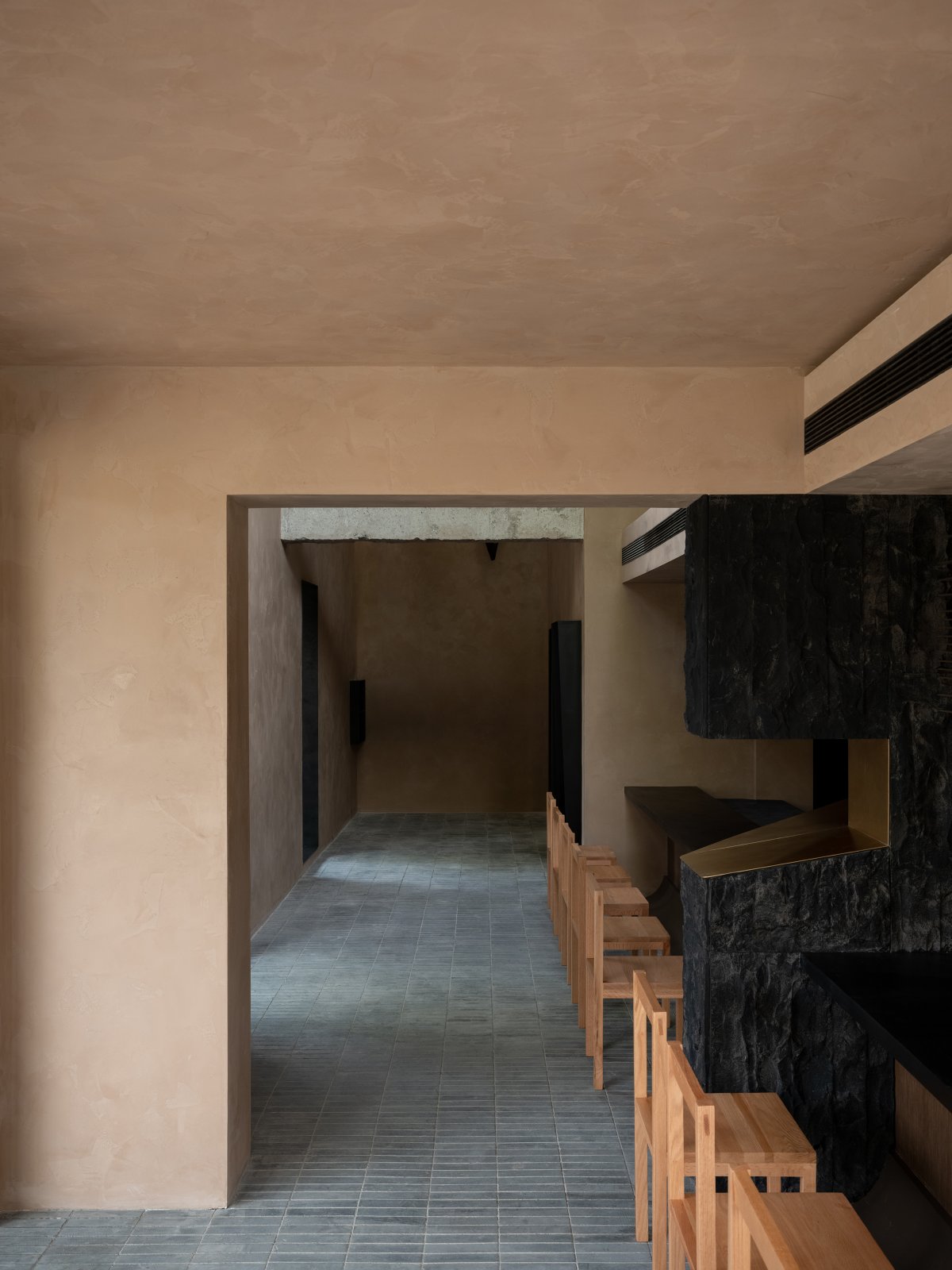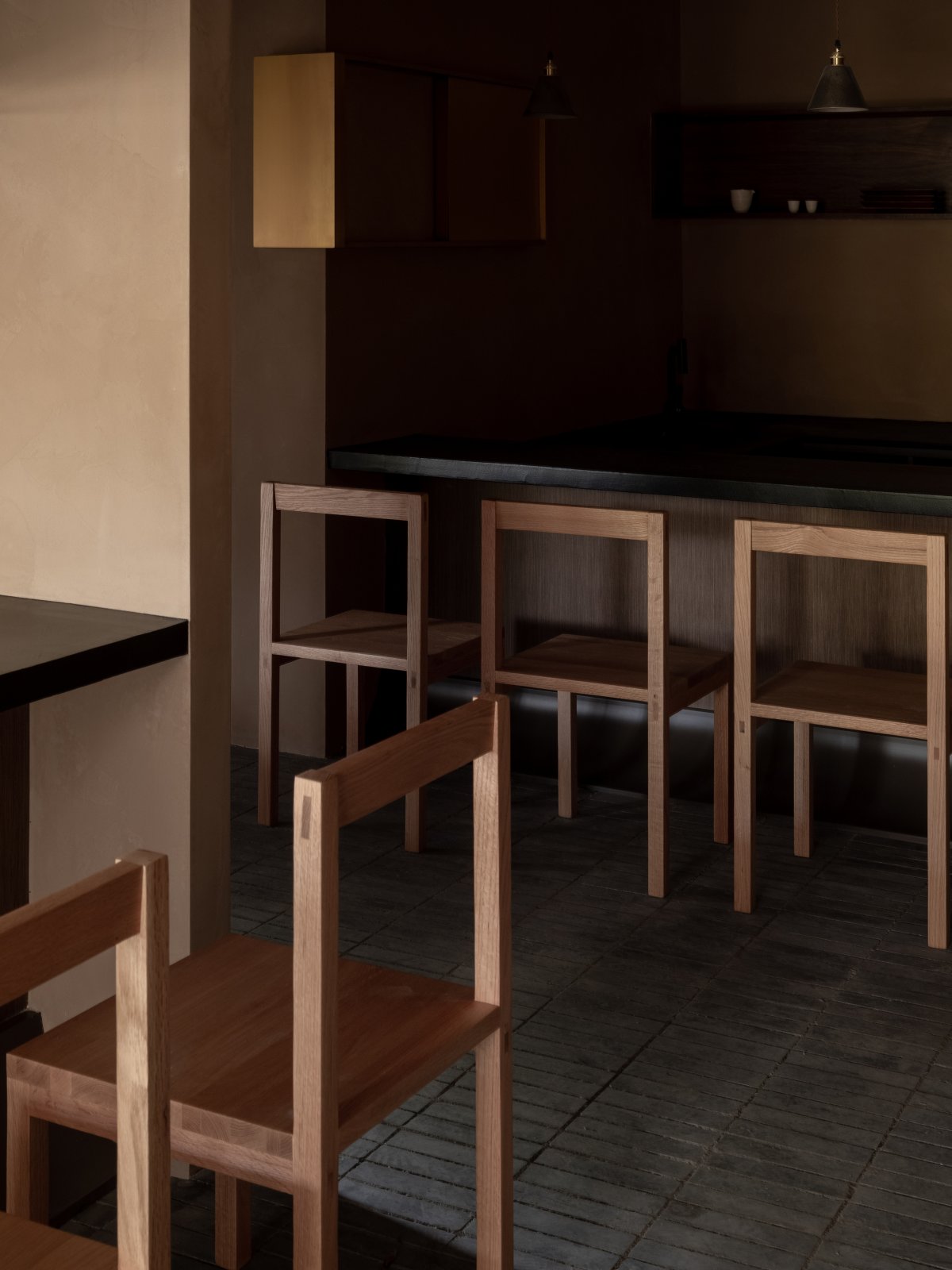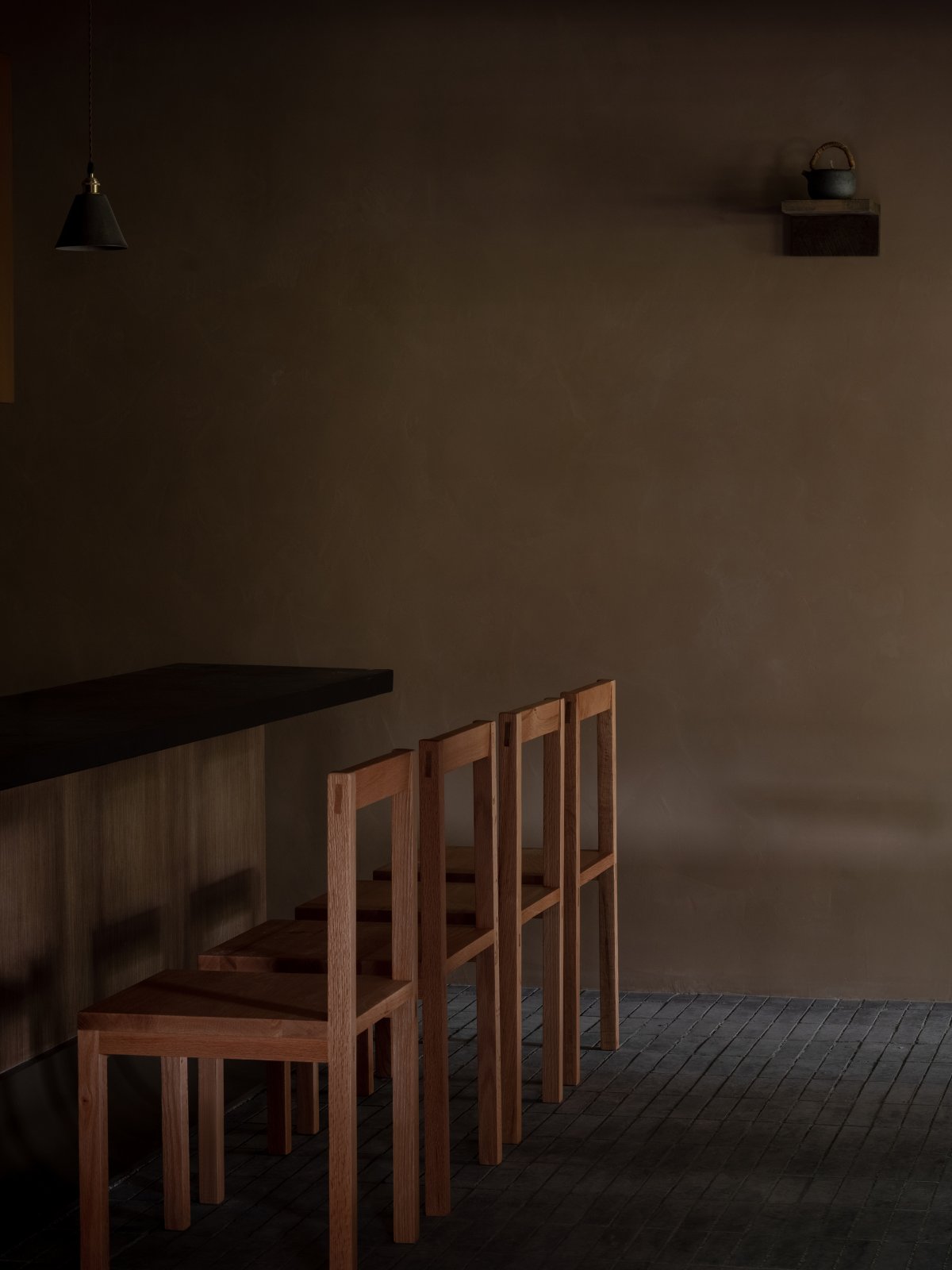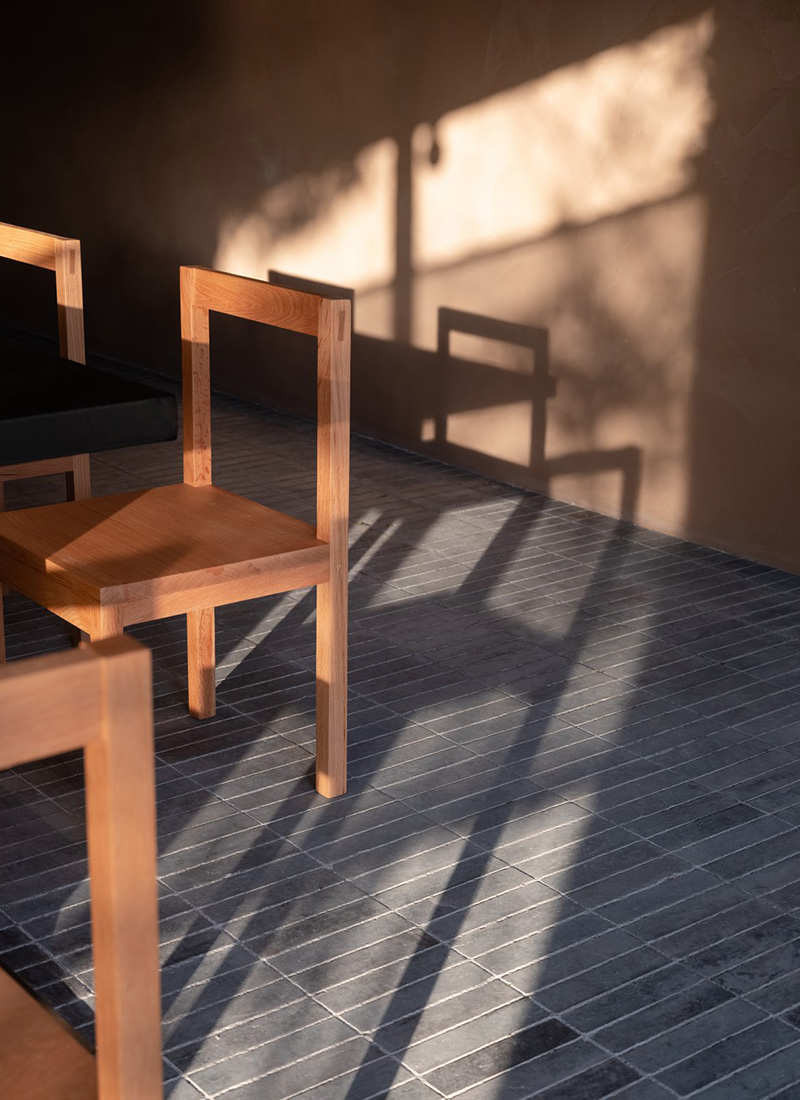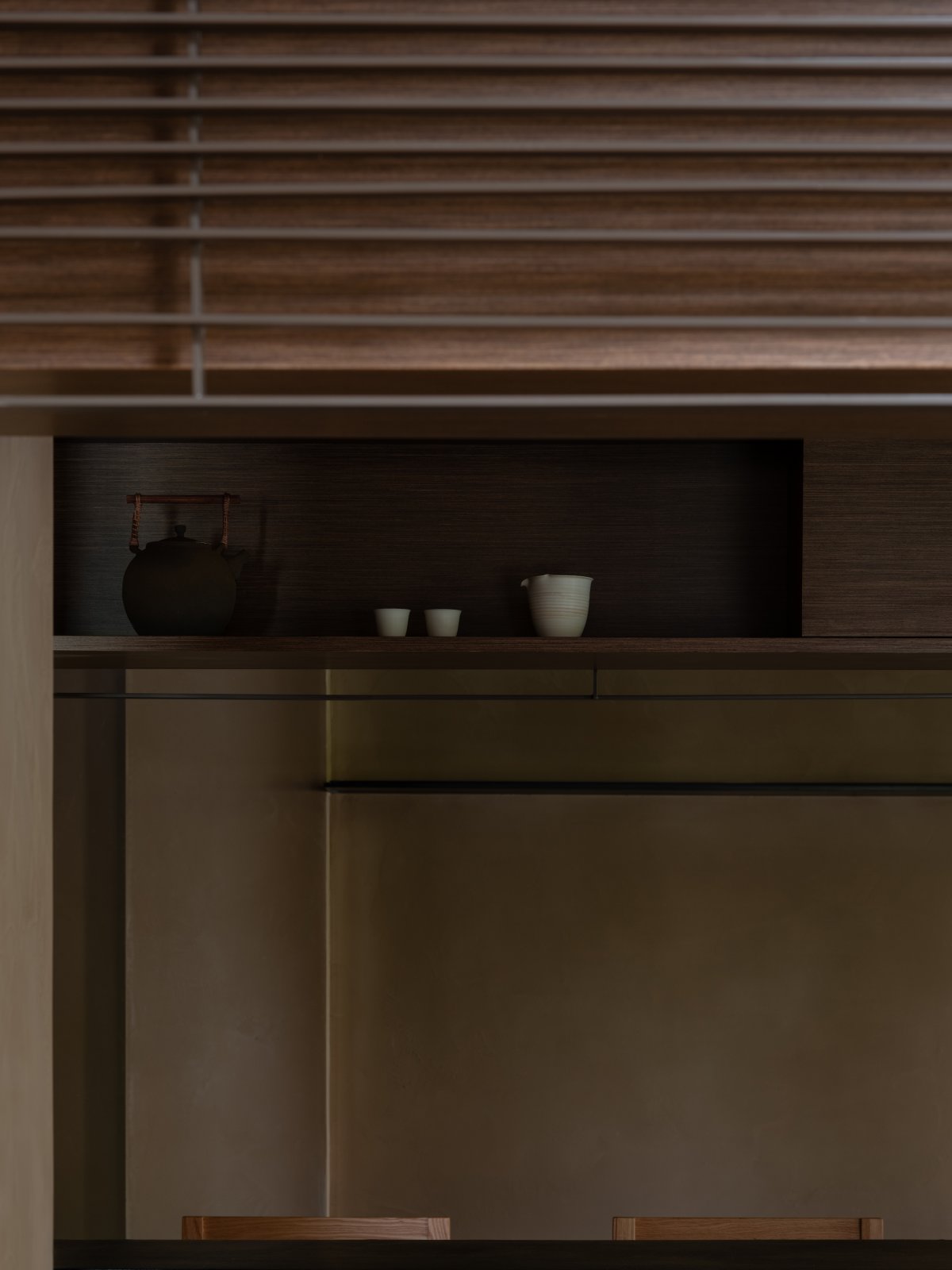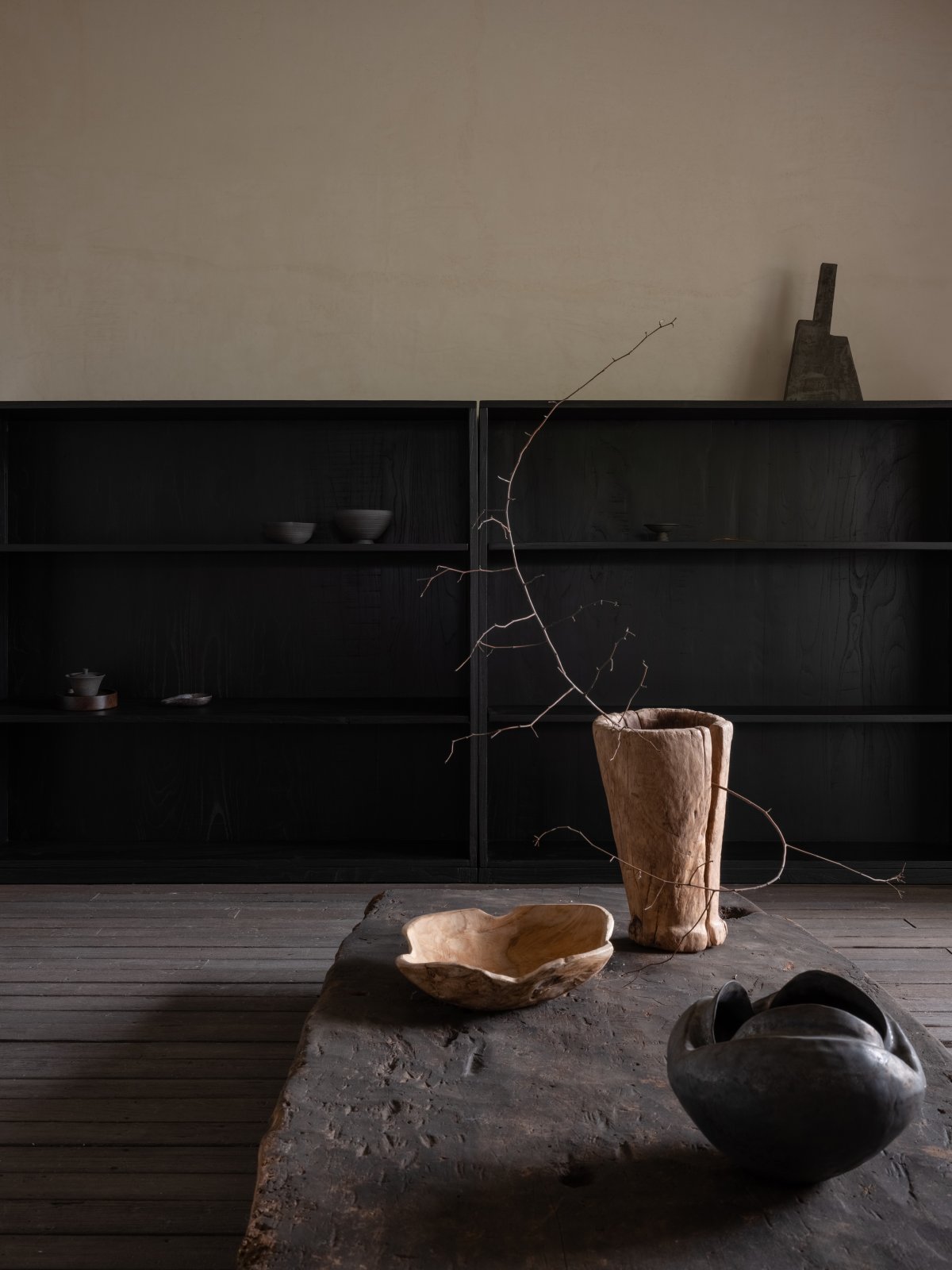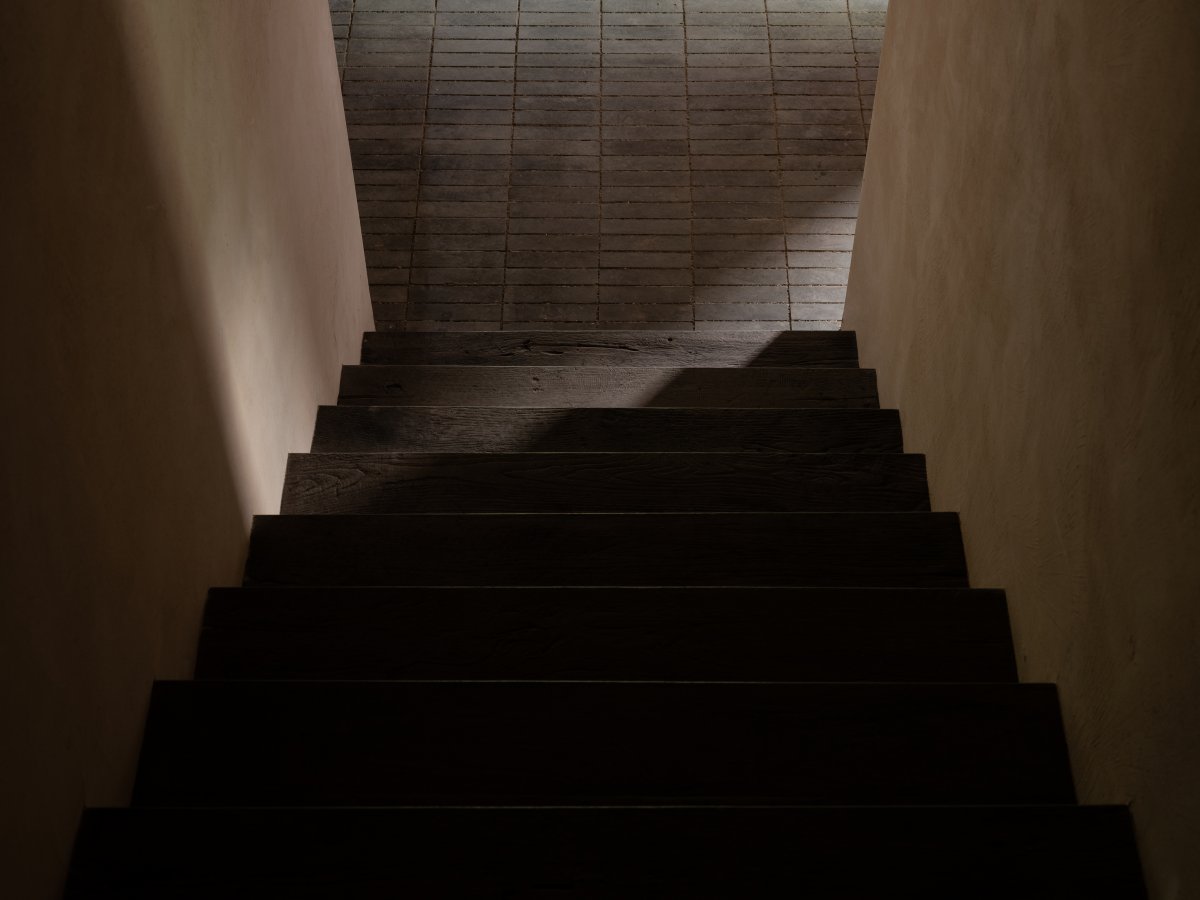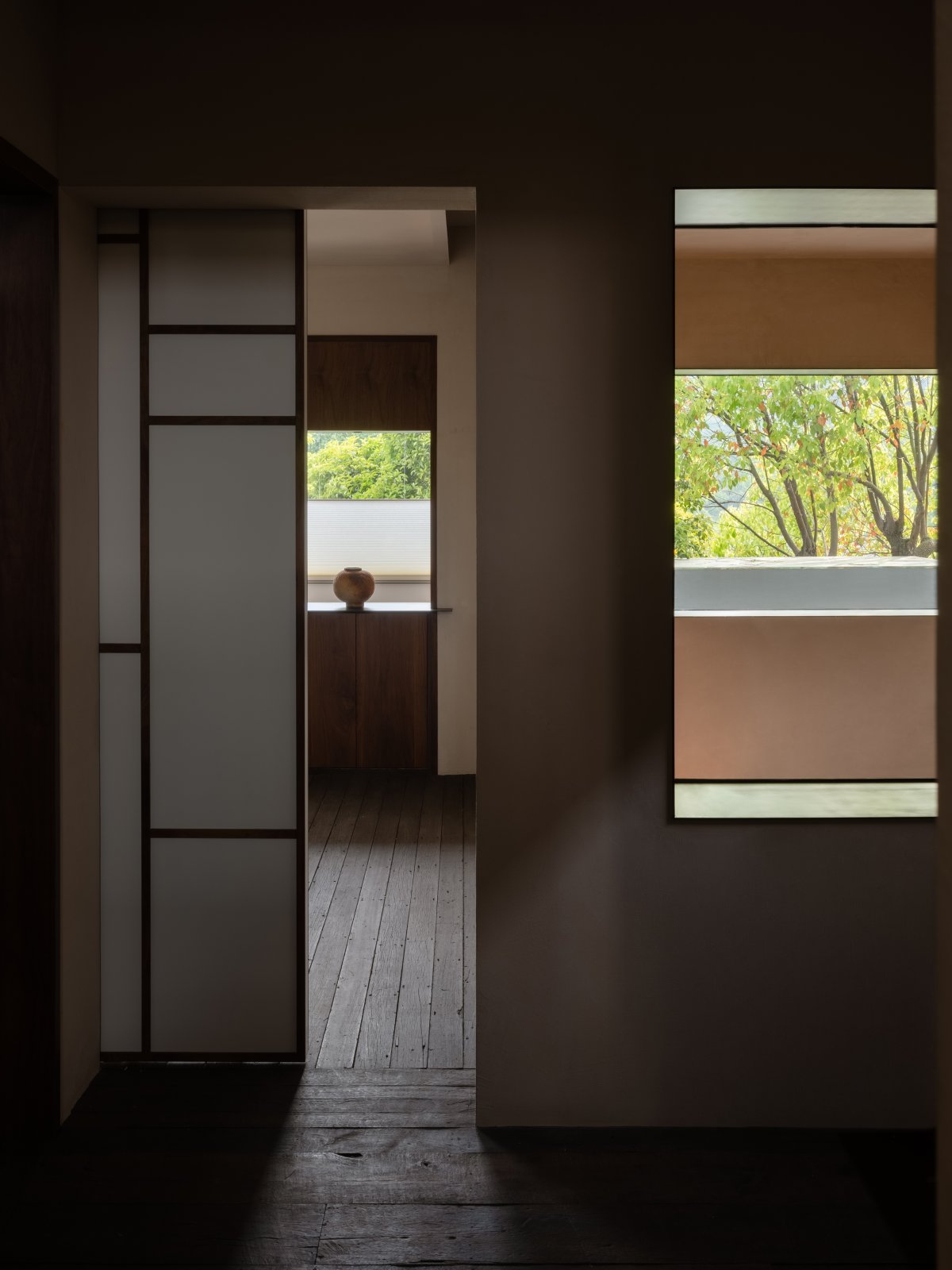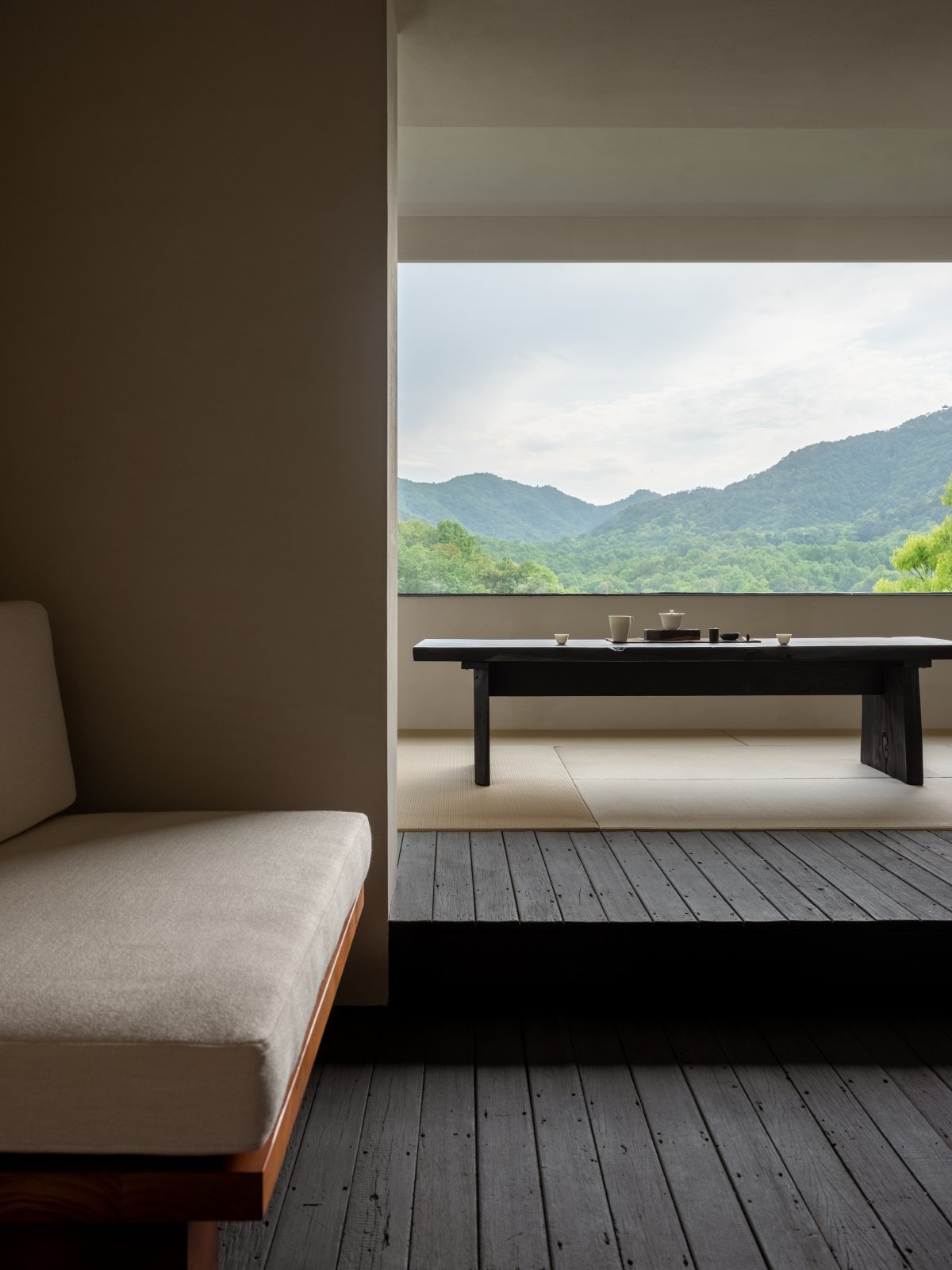
People are herd animals. In the post-epidemic era, in an infinite cycle of social isolation as well as self-isolation, the feelings that life brings to people are changing subconsciously. We found that contemporary youths tend to consume coffee, milk tea and light alcoholic beverages as their main leisure drinks. Due to the street invasion of coffee and other new beverages, they are rapidly filling every corner of our lives. As a traditional Chinese beverage, tea drinking is becoming more and more artistic in the city, with its ornamental value higher than the drinking value. However, by its nature, we believe that tea drinking should be dissolved in life.
In the public area of the first floor, we hope to break through the sense of social distance brought by the traditional tea room and reorganize the overall spatial movement, allowing people to move freely within the limited spatial structure. The implantation of the U-shaped bar can liberate people from isolation and connect independent individuals in tandem through environmental relationships.
We reserved an upward curve for the space at the entrance of the tea room, visually extending the overall proportion of the space. A piece of transparent glass was installed at the top of the curve, exposing the space, materials and colors to the environment. When the weather is good, the sunlight enters through the glass, while the shadows of the trees, which live symbiotically with the building, can wander in a disorderly manner at specific times. At the end of the aisle, there is a static installation we made in collaboration with young artists. Translucent slices of vivid black geometric forms hover over the building, connecting the upper and lower spaces vertically. At the top of the installation, natural daylight is reserved, and light is refracted through the skin of the slices to dialogue with the interior environment.
The second floor area is mainly an exhibition sharing area, where you can enjoy the fusion of traditional pottery and tea drinking culture in the display area. The third floor is a traditional tatami room, where the side facing the mountain we maximize the boundary between the windows and nature.
- Interiors: Mountain Soil
- Photos: Wen Studio

